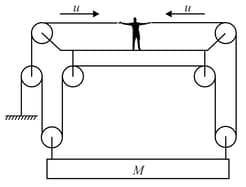Consider the shown arrangement. Assume all surfaces to be smooth. If represents magnitude of normal reaction between block and wedge then acceleration of along horizontal equals.



Important Questions on Laws of Motion
A cylinder rests in a supporting carriage as shown. The side of carriage makes an angle with the horizontal and side is vertical. The carriage lies on a fixed horizontal surface and is being pulled towards left with an horizontal acceleration . The magnitude of normal reactions exerted by sides and of carriage on the cylinder be and , respectively. Neglect friction everywhere. Then as the magnitude of acceleration of the carriage is increased, pick up the correct statement.
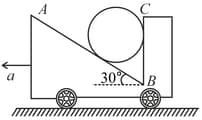
Two blocks and each of mass are placed on a smooth horizontal surface. Two horizontal forces and are applied on the two blocks and , respectively as shown in figure. The block does not slide on block . Then the normal reaction acting between the two blocks is

Two masses and are attached with strings as shown. For the system to be in equilibrium we have
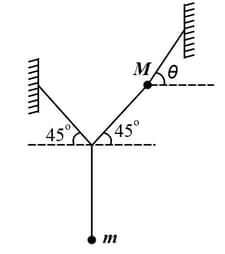
Three blocks and are suspended as shown in the figure. Mass of each block and is . If system is in equilibrium and mass of is , then :
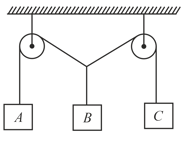
In the arrangement shown in figure, pulleys are massless and frictionless and threads are light and inextensible. Block of mass will remain at rest if :
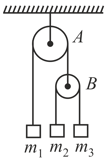
A uniform rope of length and mass is placed on a smooth fixed wedge as shown. Both ends of rope are at same horizontal level. The rope is initially released from rest, then the magnitude of initial acceleration of rope is
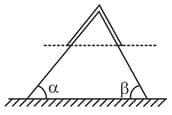
Block moves to the right with a constant velocity . The velocity of block relative to is

System is shown in the figure and man is pulling the rope from both sides with constant speed . Then the speed of the block will be ( moves vertical)
